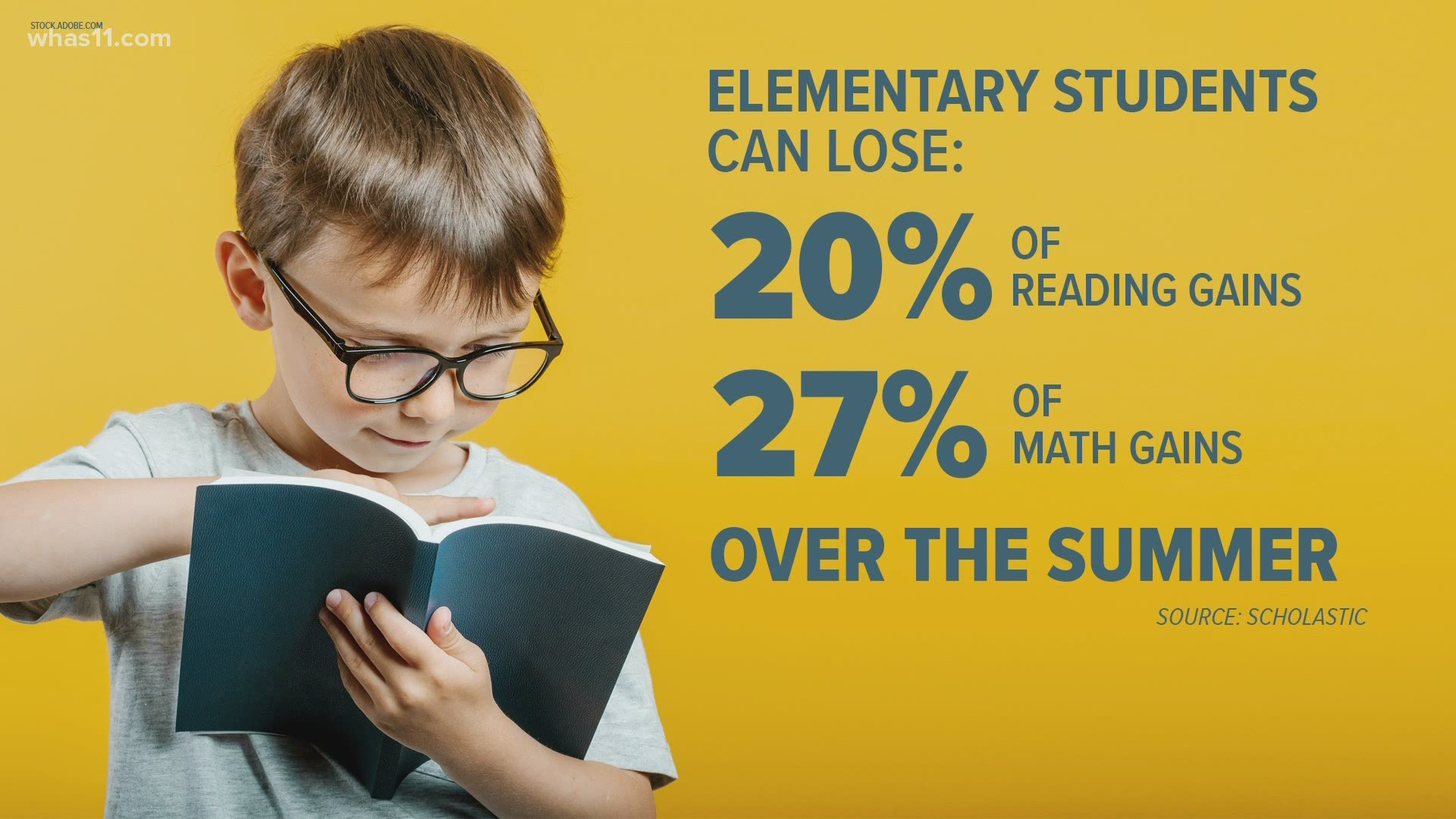INDIANAPOLIS — The Indiana Department of Education and the National Center for the Improvement of Educational Assessment, Inc. released a COVID-19 Academic Impact Study that shows Hoosier students took a significant hit.
The study found that statewide, students in elementary and middle school experienced significant academic impact in mathematics and moderate to significant impacts in English/language arts. The study also showed there is likely academic impact in other areas.
"We know that English/language arts and math provide the foundational building blocks upon which future learning is achieved, with one year of learning building upon the next," said Secretary of Education Dr. Katie Jenner. "These results confirm what we expected, and what we now know -- student learning was significantly impacted by COVID-19. I applaud our Indiana educators who worked tirelessly to ensure a safe environment that kept many students in the classroom. Looking ahead, this new baseline and other student-level data provide direction on where we must focus individualized student learning over the coming years. This is not a time to admire the problem — this is a time to focus on solutions."
Initial findings of the study are available here, and more findings are expected later this summer.
ILEARN testing showed 40.5% of students are at or above proficiency standards in English/language arts, and 36.9% are at or above proficiency standards in mathematics.
“Indiana’s educators have done phenomenal work helping students continue to learn under unprecedented circumstances. Now more than ever, every instructional minute counts, and schools cannot do this alone. With data in hand, we must look to the future, and we need everyone to come to the table -- educators, parents, community leaders and beyond -- to provide individualized support and resources to each and every student,” Jenner said.
IDOE encourages schools to adopt a comprehensive, multi-year response to help all students recover, especially students most significantly impacted. The response should include:
- Understanding the Data - First, analyze multiple individual student data points using state and local data to meet student needs where they are today.
- Intervening with Strategic Support - Use the right tools to help students, including additional staff resources to allow small group instruction and strategic leveraging of community resources and talent.
- Acting to Meet Students at Their Current Level - Based on data analysis, determine the action steps for individual students.
- Recognizing That One Size Does Not Fit All - Tailor instruction for individual or small groups, in particular those with specific learning needs.
- Innovating to Strategically Accelerate Learning - To support all students, new, bold, and dedicated efforts are essential.
- Leveraging Every Minute and Keeping the Focus on Student Impact - Be intentional with, and consider ways to expand, learning time. Devote uninterrupted blocks of time to literacy and math.
- Providing Intentional and Focused Instruction - Focus on grade-level instruction with remediation as needed for individual students, which includes ensuring understanding of fundamental, essential previous grade-level standards.
IDOE also released attendance rates for the 2020-2021 school year, and that can be found here.
What other people are reading:
- Newlyweds reoutfit school bus to be home on wheels
- 3 suspects arrested more than a year after Brownsburg student's murder, 1 already in custody
- 'Rest In Peace, faithful servant': Police agencies across Indiana salute fallen Terre Haute detective
- IRS sending out 4 million more tax refunds to those who overpaid on unemployment
- Carnival Cruise Line to require unvaccinated passengers to buy travel insurance
- Mural in north Toledo reduced to rubble after being struck by lightning
- Spike in RSV cases in Indiana has hospitals taking precautions
- Social Security recipients could see largest cost of living increase in decades

